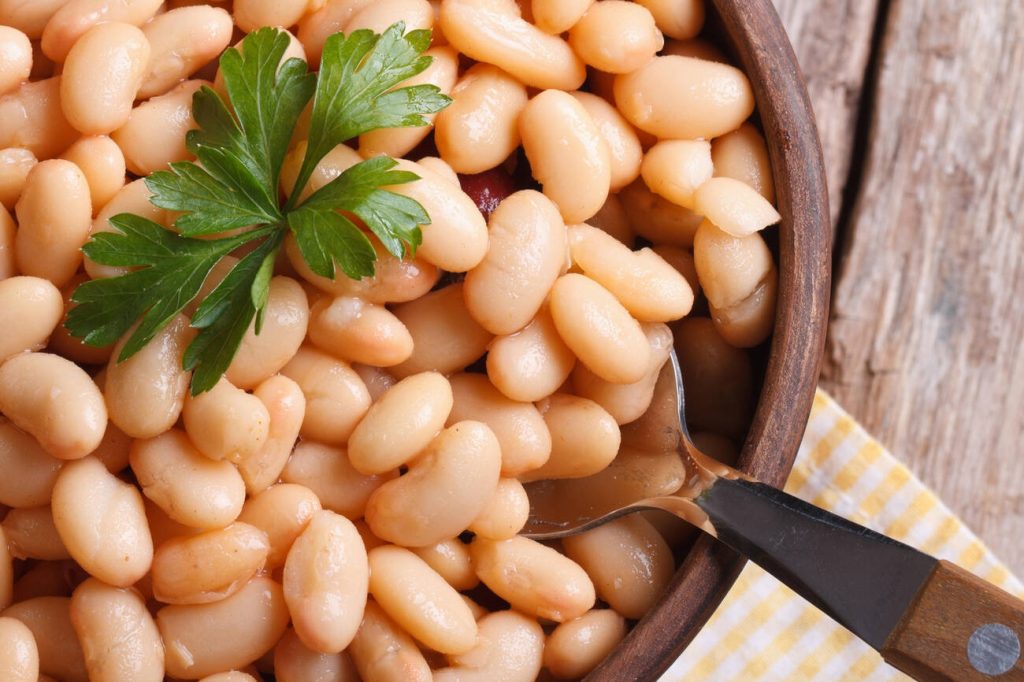Do you ever find yourself looking at healthy recipes and thinking, “Why on earth would I want to eat that?” Well, you’re not alone. Many people feel the same way when they come across these seemingly unusual or unappetizing dishes. But have you ever wondered why this is the case? Why do healthy recipes often seem so weird? In this article, we will explore the reasons behind these unconventional choices and discover how they can actually be beneficial for your overall well-being. So grab a seat and get ready to uncover the secrets of those “weird” healthy recipes.
Unconventional Ingredients
You might find it surprising that some healthy recipes include unconventional ingredients. From unique ingredient pairings to fusion cuisine, the world of healthy cooking is filled with unexpected flavor profiles. Chefs and home cooks alike are experimenting with unconventional cooking techniques and surprising ingredient substitutions to create dishes that are both nutritious and delicious. Who would have thought that cauliflower could be transformed into a creamy pasta sauce or that black beans could be used as a base for brownies? These unconventional ingredients not only add variety to your meals but also provide an array of nutrients. So, don’t be afraid to step out of your comfort zone and try these unconventional ingredients in your next healthy recipe. You just might discover a new favorite dish!
Unique Flavor Combinations
Experimenting with unexpected flavor combinations can add excitement and depth to your culinary creations. By exploring unique pairings, you can embark on a journey of taste exploration and culinary innovation. Here are three ways to infuse your dishes with unexpected flavors:
- Fusion Cuisine:
- Combine elements from different cuisines to create exciting new dishes.
- Mix traditional ingredients with unconventional spices for a delightful twist.
- Experiment with blending flavors from diverse cultures to create harmonious fusion dishes.
- Flavor Experimentation:
- Step out of your comfort zone and try unusual ingredient combinations.
- Play with contrasting tastes like sweet and savory or spicy and tangy.
- Explore the use of herbs, spices, and seasonings in unexpected ways.
- Culinary Innovation:
- Push the boundaries by incorporating unconventional ingredients into familiar recipes.
- Think outside the box and challenge traditional cooking techniques.
- Embrace creative plating techniques to enhance visual appeal.
With these approaches, you can unleash your creativity in the kitchen and elevate your dishes through unexpected pairings that will surprise and delight your taste buds.
Alternative Cooking Methods
Using alternative cooking methods can introduce unique flavors and textures to your dishes, such as grilling, smoking, or sous vide. These innovative techniques offer unorthodox approaches to preparing food and can elevate your culinary experience. By exploring unconventional processes and non-traditional practices, you can unlock a world of creativity in the kitchen.
Here is a table showcasing some alternative cooking methods:
| Cooking Method | Description | Benefits |
|---|---|---|
| Grilling | Cooking food over direct heat | Adds smoky flavor and crispy texture |
| Smoking | Slowly cooking food with smoke | Infuses rich smoky flavors |
| Sous Vide | Vacuum-sealing and slow-cooking | Ensures precise temperature control |
| Fermentation | Using microbes to preserve and flavor | Creates complex tangy flavors |
| Dehydration | Removing moisture from food | Concentrates flavors and enhances shelf life |
Cultural Differences
When it comes to cultural differences, exploring different cuisines can open your taste buds to a world of diverse flavors and culinary traditions. Here are some reasons why healthy recipes may seem weird:
- Cultural preferences: Healthy recipes often reflect the traditional dishes of a particular culture, which may include ingredients or cooking methods that are unfamiliar to you.
- Regional variations: Different regions within a country or even different countries have their own unique approach to healthy eating, incorporating local ingredients and techniques.
- Fusion cuisine: With globalization and increased cultural exchange, fusion cuisine has become popular. These recipes combine elements from various culinary traditions, resulting in unexpected flavor combinations.
Health Food Trends
If you’re curious about health food trends, there are plenty of innovative and exciting options to explore. From unconventional ingredients to unique flavor combinations, the world of healthy eating is full of surprises. Cultural differences play a significant role in shaping these trends, as different cuisines bring their own distinct flavors and techniques to the table. Exotic superfoods like spirulina, matcha, and moringa have gained popularity for their numerous health benefits. These ingredients not only add a nutritional boost but also introduce new and exciting flavors to your meals. Additionally, health food trends often involve unfamiliar texture profiles that can challenge your taste buds in unexpected ways. So don’t be afraid to step out of your comfort zone and try something new – you might just discover a delicious and nutritious addition to your diet!
Exotic Superfoods
To expand your culinary horizons, consider incorporating exotic superfoods into your diet; they offer unique flavors and impressive health benefits. Exotic superfoods can be a fun and adventurous way to experiment with new flavors from different cultures. Here are some reasons why you should give them a try:
- Cultural preferences: Exotic superfoods reflect the traditional dishes of various cultures, allowing you to experience their authentic flavors and culinary traditions.
- Health benefits: These superfoods are packed with nutrients, antioxidants, and other beneficial compounds that can support your overall well-being.
- Culinary experimentation: Incorporating exotic superfoods into your recipes can add an exciting twist to your meals and expand your cooking skills.
However, sourcing challenges may arise when trying to find these ingredients in local grocery stores. But don’t let that deter you! Explore specialty markets or consider online shopping for a wider variety of options.
Creative Substitutions
Finding creative substitutions for ingredients can add a unique twist to your favorite dishes and expand your culinary repertoire. By experimenting with unusual ingredient pairings, innovative cooking techniques, unexpected flavor profiles, unconventional substitutions, and creative plating styles, you can elevate your cooking to new heights. Check out the table below for some inspiration:
| Unusual Ingredient Pairings | Innovative Cooking Techniques | Unexpected Flavor Profiles |
|---|---|---|
| Avocado and chocolate | Sous vide cooking | Sweet and spicy |
| Cauliflower rice | Molecular gastronomy | Savory and floral |
| Coconut milk and curry | Smoking food | Tangy and smoky |
| Quinoa as a meat substitute | Dehydrating ingredients | Salty and sweet |
These examples demonstrate how thinking outside the box can lead to exciting culinary creations. So don’t be afraid to experiment and let your creativity shine in the kitchen!
Unfamiliar Texture Profiles
Many people are hesitant to try foods with unfamiliar texture profiles. They prefer sticking to what they know, avoiding any potential surprises when it comes to the mouthfeel of their meals. However, venturing into the world of unusual textures can be a rewarding and exciting experience. Here are some reasons why you should consider embracing unfamiliar texture profiles:
- Unfamiliar ingredient pairings: Trying new combinations of ingredients can lead to unique textures that you may have never experienced before.
- Unconventional cooking techniques: Exploring different cooking methods can result in unexpected textures that add depth and complexity to your dishes.
- Cultural influences on texture: Embracing cuisines from different cultures allows you to appreciate the diverse range of textures that exist in global cuisine.
Incorporating alternative ingredient textures: Experimenting with alternative ingredients like plant-based proteins or gluten-free flours introduces a whole new world of textures into your meals.
Challenging Preparation Techniques
Now that you understand why some healthy recipes have unfamiliar texture profiles, let’s dive into another reason why they can be a bit weird: challenging preparation techniques. Healthy recipes often require exploring traditional methods, ingredient experimentation, and adapting to dietary restrictions. Many modern healthy recipes embrace fusion cuisine, combining different flavors and ingredients to create unique dishes. This can result in complex recipes that may seem intimidating at first glance. However, don’t let this discourage you! As the popularity of healthy eating continues to grow, many cooks are simplifying these complex dishes by providing step-by-step instructions and helpful tips. So don’t be afraid to try out those seemingly strange recipes – you might just discover a new favorite dish!
| Exploring Traditional Methods | Ingredient Experimentation | Adapting to Dietary Restrictions |
|---|---|---|
| Embracing Fusion Cuisine | Simplifying Complex Dishes |
Unusual Presentation Styles
When trying out new dishes, don’t be surprised if you come across some unusual presentation styles that may initially catch you off guard. Food aesthetics have evolved over time, influenced by various factors such as fusion cuisine, molecular gastronomy, foraged ingredients, and ancient cooking techniques.
- Fusion Cuisine
- Combining different culinary traditions can result in unique and unexpected plating styles.
- The blending of flavors and techniques creates visually striking dishes.
- Fusion cuisine challenges traditional notions of presentation, encouraging creativity and experimentation.
- Molecular Gastronomy
- This modern culinary approach uses scientific principles to transform the texture and appearance of food.
- Molecules are manipulated to create surprising textures like foams, gels, and spheres.
- Molecular gastronomy elevates the visual aspect of a dish by presenting it in innovative ways.
- Foraged Ingredients
- Chefs are increasingly incorporating wild plants and herbs into their dishes.
- Foraged ingredients often have distinct shapes or colors that contribute to the overall presentation.
- The use of foraged ingredients adds an element of nature’s beauty to the plate.
Embrace these unconventional presentation styles as they showcase the chef’s artistic expression while delivering a memorable dining experience.

